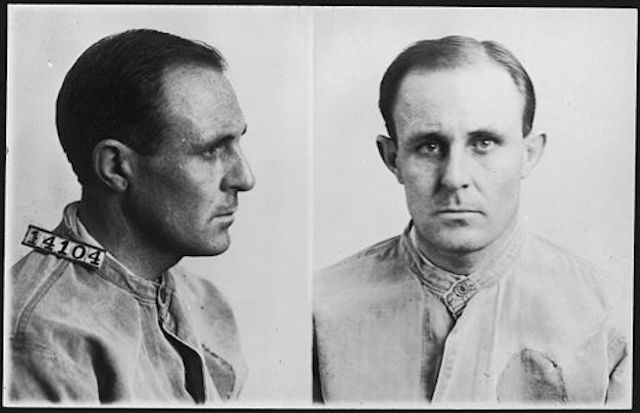
Inside of the decaying building, wind and rain sent shivers down our backs as we gazed at the photographs of prisoners who once lived and worked here.
I stood next to two of my colleagues and dearest friends from graduate school. We commented on the facial expressions of the men before us, speculating about their childhoods and familial experiences that led to a life of crime. We drew parallels between the chubby gangster in the photo before us and the children we meet for weekly counseling sessions at home. I saw within the face of a famous crime lord a child who struggled to regulate his emotions with a mother using substances and an absent father he never met.
Walking the labyrinth of famous photographs in Alcatraz, waves of emotion swept over me, with each picture revealing a new element of an unwritten story. I found myself hovering over a photo near the back of the room when my friend approached me.
“I am starting to lose my emotional shield, and I am about to break down,” she shared in an almost whisper. I turned away from the photos in front of me, knowing the photos had revealed their stories to her as well.
A gentle reminder whispered, “We cannot heal everyone.”
Within the hour, we became lost in ourselves. The headphones on our ears guided us around the prison, retelling the stories of men who lived in the cells long ago. Stories of former and present clients became intermixed with those of the prisoners who once inhabited the cells before me.
My heart was full of mixed emotions. I was at once disturbed by the prisoners’ actions and empathetic toward their untold stories of trauma and disrupted attachments.
I left the building in hopes of never returning. I had become separated from my friends, but I decided it was a good time to be alone. I walked past birds flocking on elements that were once buildings and put my hood up to protect my hair from the gentle mist and chill of the San Franciscan shore.
It was a strange juxtaposition to pass by both beautiful flowers and mesmerizing views next to buildings intended to imprison men. I climbed the narrow cement stairs, passing strangers with umbrellas taking photographs of themselves smiling against the cityscape and views of the Golden Gate Bridge, but I could only think of broken dreams and lives wasted behind bars.
Photos would not capture my experience, so I wrote the following poem:
Beautiful destruction
Instant interruption
From strongly held assumptions
Take photos
Take blame
A place of peace
Once a place of shame
Beautiful compromise
Flowers grow where men died
Never healing
From battles inside
A cell gate stands
Blood on my hands
Could have been any man
Mind interrupted
Cell gates slammed
Innocents scammed
Not the Promised Land
Freedom on the horizon
Untouchable as the sun
Souls persist
Their songs never sung
I carry the pain
I carry the scars
Freedom’s never free
When men are behind bars
The ferry ride back to shore was somber. It took me two hours before I had the courage to share my poem with my friends as we sat at a bar on dry land with a plate full of food and a beer. We all agreed Alcatraz was the one National Park we are glad we visited but had no desire to revisit.
Two days after returning from my trip to San Francisco, my dad informed me that one of my childhood friends had committed suicide. His father had committed suicide when he was a child, and he spent much of his life escaping the trauma of his childhood through drugs and violence. While I was finishing my master’s degree, he was sent to prison for shooting a gun near a school.
Shortly after I graduated, he was released and put on parole.
My dad informed me that my friend had broken his parole agreement and was facing prison time. Rather than being sent back to prison, he made the decision to end his life, repeating his own family history.
The story of my friend is the story of Alcatraz. Each individual there held an untold story inside him, despite only being known by the numbers above his cell.
Some escaped and left stories of illusion and mystery. Others reformed and created stories of hope and inspiration. A few rebelled and are known today for the chaos, violence, and death that resulted from their actions. Many were lost and remain unknown, but their stories remain etched in the decaying and somber buildings on the island.
Given my personal experience on Alcatraz and my professional experience as a mental health counselor, I am not one to believe that life is as simple as defining men based on their actions. There are many events leading up to actions of violence and terror and, I believe, many moments that have the power to interrupt cycles of violence and trauma.
We all have the power on any given day to look a little deeper at the faces that surround us, encourage courage, and ask others to share their stories with us.
Alcatraz is a reminder to me that every individual has a story to share, if only we can lower our defense with bravery and listen.
~
~
Author: Olivia Lynn Schnur
Image: Wikimedia
Editor: Callie Rushton











Read 20 comments and reply